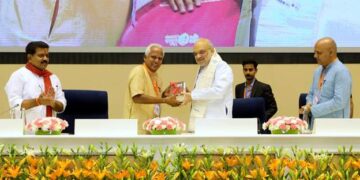
A Mathematics Laboratory is a dedicated space designed to enhance mathematics learning through interactive and hands-on experiences. It is a vital resource for developing critical thinking and problem-solving skills. By utilizing innovative activities and demonstrations, abstract mathematical concepts are made accessible and understandable. This article examines the various opportunities provided by a mathematics laboratory and its importance in mathematics education.
Opportunities Offered by a Mathematics Laboratory
- Discovering Patterns for Insights into Formulae
Purpose: A Mathematics Laboratory allows students to explore and discover patterns that lead to mathematical formulae.
Example: Using physical tiles or graph paper, students can deduce the formula for the area of a triangle (A=1/2 base×height)by observing how triangles form half of rectangles.
Importance: This process fosters curiosity and promotes deeper understanding by linking observations to formal expressions.
- Visualizing Algebraic and Analytical Results Geometrically
Purpose: Visualization bridges the gap between algebraic equations and geometric interpretations.
Example: Students can use a coordinate plane to plot quadratic equations (y=ax2+bx+c) and observe how changing coefficients affect the shape and position of parabolas.
Importance: It develops spatial reasoning and clarifies abstract concepts by representing them graphically.
- Designing Practical Demonstrations of Mathematical Results
Purpose: Demonstrating mathematical principles in real-life contexts enhances comprehension.
Example: Constructing a working model of a pendulum to study periodic functions such as sine and cosine.
Importance: Hands-on activities like these link theory with practice, making learning interactive and memorable.
- Encouraging Interaction Through Debate and Discussions
Purpose: Engaging students in debates and discussions nurtures critical thinking and collaborative learning.
Example: Students debating whether infinity is a number, or a concept explore the nature of mathematical abstractions.
Importance: Interaction fosters a supportive environment where students can articulate their thoughts and learn from peers.
- Recognizing, Extending, and Formulating Patterns
Purpose: Pattern recognition helps students generalize and formulate conjectures.
Example: Identifying sequences like 1, 4, 9, 16, … (squares of integers) encourages students to discover the general rule (n2).
Importance: This builds foundational skills in hypothesis formation and logical reasoning.
- Comprehending Mathematics from Concrete to Abstract
Purpose: Learning progresses naturally when students move from tangible examples to abstract concepts.
Example: Using physical manipulatives such as blocks to understand the concept of volume before deriving formulae for cubes and spheres.
Importance: This approach accommodates diverse learning styles and ensures a strong conceptual foundation.
- Providing Opportunities for Logical Reasoning Across Ability Levels
Purpose: A Mathematics Laboratory is inclusive and caters to diverse ability groups.
Example: Advanced learners might solve complex puzzles, while others explore basic geometric constructions.
Importance: It allows all students to participate, ensuring growth in logical reasoning skills at their own pace.
- Constructing Knowledge Independently
Purpose: Empowering students to build their own understanding is a cornerstone of effective education.
Example: Letting students derive the Pythagorean theorem using paper cut-outs rather than simply memorizing it.
Importance: Independent construction of knowledge fosters self-confidence and a deeper appreciation for mathematics.
- Engaging in Recreational Activities
Purpose: Games and puzzles make learning enjoyable and stimulate intellectual curiosity.
Example: Sudoku, tangrams, or magic squares introduce logical reasoning in an entertaining way.
Importance: Recreational activities reduce the fear of mathematics and make it more approachable.
- Undertaking Projects Under Teacher Guidance
Purpose: Project-based learning encourages creativity and critical thinking.
Example: A project exploring the Fibonacci sequence in nature, such as in sunflowers or shells.
Importance: Projects provide in-depth exploration of topics and develop research skills.
- Using 3D Models for Abstract Concepts
Purpose: Physical models help students visualize and comprehend complex ideas.
Example: A 3D model of a cone can demonstrate the relationship between the cone’s volume and that of a cylinder.
Importance: Visual aids make abstract mathematical concepts more accessible.
- Connecting Mathematics to Real-Life Problems
Purpose: Showing the practical relevance of mathematics motivates learners.
Example: Calculating interest rates or designing structures based on geometric principles demonstrates real-world applications.
Importance: This practical connection reinforces the utility of mathematics in everyday life.
Conclusion
A Mathematics Laboratory is an invaluable educational tool that enriches the teaching and learning process. By providing diverse opportunities to explore, interact, and discover, it fosters a deeper understanding of mathematics. Through hands-on activities, visualization, and real-world applications, students are inspired to engage with mathematics in creative and meaningful ways, preparing them for academic and practical success.
The writer is a member of Faculty of Mathematics, Department of General Education SUC, Sharjah, UAE.
Email: reyaz56@gmail.com




